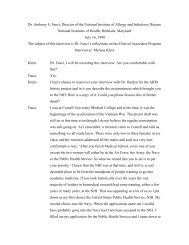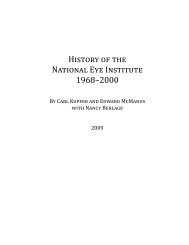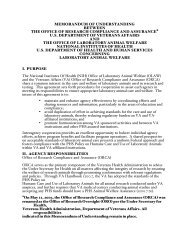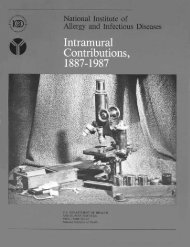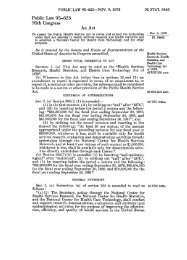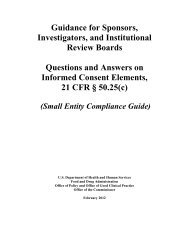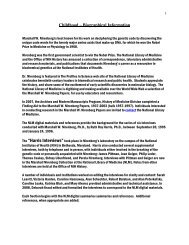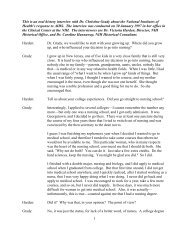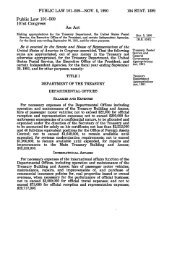Radium and the Origins of the National Cancer Institute
Radium and the Origins of the National Cancer Institute
Radium and the Origins of the National Cancer Institute
Create successful ePaper yourself
Turn your PDF publications into a flip-book with our unique Google optimized e-Paper software.
114 C a n t o rIn addition to <strong>the</strong> requirement for state approval, <strong>the</strong> NCI stipulatedthat only those with qualifications equivalent to those required fordiplomates <strong>of</strong> <strong>the</strong> American Board <strong>of</strong> Radiology (incorporated in 1934)would be allowed to use <strong>the</strong> radium for treatment. “This is <strong>the</strong> highestst<strong>and</strong>ard that we know <strong>of</strong> in this country,” explained Carl Voegtlin, <strong>the</strong>chief <strong>of</strong> <strong>the</strong> NCI, who went on to elaborate a legal rationale as well: “<strong>and</strong>it was adopted in order to protect ourselves against <strong>the</strong> possibility <strong>of</strong>lawsuits by persons who might be injured as <strong>the</strong> result <strong>of</strong> improperradium <strong>the</strong>rapy.” 89 However, Schereschewsky (who had now moved fromHarvard to Georgia, where he was <strong>the</strong> acting director <strong>of</strong> cancer controlfor <strong>the</strong> state) worried that this recommendation might work against effortsto ensure that <strong>the</strong> radium was distributed to places that did not have it.In his view, <strong>the</strong> American Board <strong>of</strong> Radiology’s qualifications were sostrict that <strong>the</strong> creation <strong>of</strong> some outlying centers without such qualifiedradiologists would be unduly delayed, <strong>and</strong> would, as he put it, “seriouslycripple cancer treatment facilities in <strong>the</strong> State.” 90 By 1962, seven institutionshad been denied a loan because <strong>the</strong>ir radiologists did not meet <strong>the</strong>qualifications <strong>of</strong> <strong>the</strong> Board. 91These issues highlight tensions between federal <strong>and</strong> state administratorsover <strong>the</strong> radium loan program. The program might have begun as an effortto cement cooperative arrangements, but sometimes federal <strong>and</strong> state<strong>of</strong>ficials did not cooperate. Federal <strong>of</strong>ficials found state <strong>of</strong>ficials questioninghow <strong>the</strong>y ran <strong>the</strong> program. These <strong>of</strong>ficials queried federal decisionsby which hospitals received or did not receive radium; federal decisionson <strong>the</strong> qualifications required <strong>of</strong> radium practitioners; <strong>and</strong> <strong>the</strong> federaldecision that only indigent patients should receive government radium.Georgia makes <strong>the</strong> case again. The Georgian control scheme aimed tomake cancer clinics available for both private <strong>and</strong> state-aided patients,<strong>and</strong> Georgian <strong>of</strong>ficials worried that federal rules dictated that, even where<strong>the</strong>re was no o<strong>the</strong>r radium locally, paying patients would not be allowedto use NCI radium. Therefore <strong>the</strong>y would be required to travel a considerabledistance for treatment–a requirement that would probably resultin delayed treatment. 92 The NCI’s response is not recorded, but it doesnot seem to have changed its rules.We do not know much about <strong>the</strong> technical use <strong>of</strong> radium: few recordson this subject appear to have survived. However, <strong>the</strong> quantity <strong>of</strong> radium




